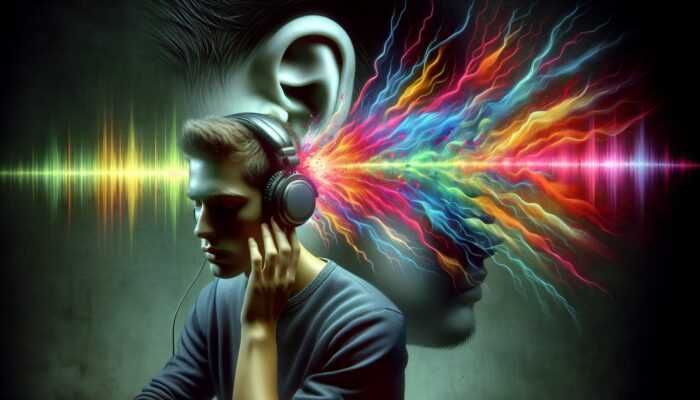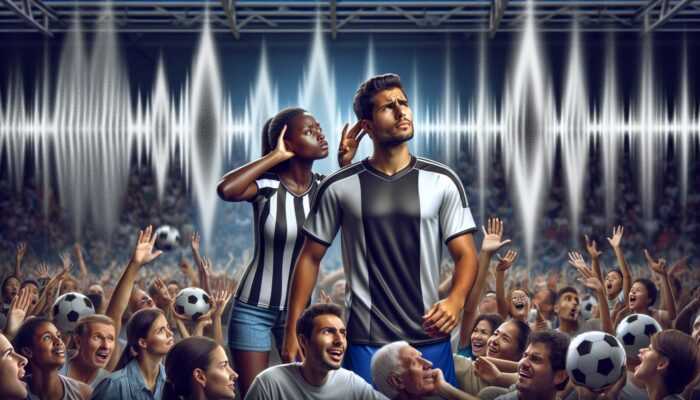Last Updated on 08/10/2025 by Admin
Understanding the Connection Between Loud Music and Hearing Loss
What Are the Mechanisms by Which Loud Music Harms the Ear?
The impact of loud music on hearing can be profoundly damaging, particularly to the delicate hair cells found within the inner ear. These hair cells are essential for transforming sound vibrations into electrical signals that the brain recognizes as sound. When exposed to high volumes, these cells risk suffering damage or complete destruction, which can lead to irreversible <a href=”https://www.earwaxremoval.net/supporting-kids-with-hearing-loss-strategies-for-teachers/”>hearing loss</a>. This kind of permanent damage can hinder one’s ability to hear certain frequencies, ultimately diminishing the enjoyment of music and complicating verbal communication in social settings.
The main components of the ear that are affected by exposure to loud music are:
- Hair Cells: Tiny sensory cells within the cochlea that convert sound waves into electrical impulses.
- Cochlea: A spiral-shaped organ located in the inner ear that is pivotal for hearing.
- Auditory Nerve: The pathway that transmits sound signals from the cochlea to the brain for interpretation.
- Middle Ear Bones: The ossicles that amplify sound vibrations before they reach the inner ear.
The cumulative impact of frequent exposure to loud music can result in increasingly severe hearing impairments, highlighting the necessity of being aware of the potential risks involved.
How Do Decibel Levels Affect Hearing Health?
Grasping the concept of decibel levels is crucial for understanding how loud music can inflict damage on hearing capabilities. Sound intensity is quantified in decibels (dB), with levels exceeding 85 dB recognized as potentially harmful to hearing health. Continuous exposure to sounds at these intensities can trigger the onset of hearing loss. Importantly, the louder the music, the shorter the period one can safely listen without incurring damage.
Notable decibel levels and their associated risks include:
- 60 dB: Normal conversation — generally safe for unrestricted exposure.
- 85 dB: Heavy traffic — risk of hearing damage after 8 hours of exposure.
- 100 dB: Live concerts — significant risk of hearing damage after just 15 minutes.
- 120 dB: Jet take-off — immediate risk of hearing damage with any exposure.
These distinctions underscore the urgency for individuals to be vigilant about their sound exposure, especially in settings where loud music is prevalent.
What Are the Long-Term Effects of Noise Exposure?
The gradual accumulation of noise exposure can result in serious hearing damage over time, even when individual episodes of exposure are not perceived as excessively loud. This phenomenon illustrates the importance of evaluating overall exposure rather than concentrating solely on peak volume levels. The cumulative effects can lead to a slow decline in hearing ability, making it vital for individuals to cultivate habits that minimize risk.
Engagement with loud music—whether at concerts, festivals, or through personal listening devices—exacerbates the risk of hearing loss. Over time, this exposure can create significant difficulties in communication and social interactions. Thus, incorporating protective measures and fostering awareness about cumulative exposure is essential for maintaining hearing health throughout life.
Identifying Risk Factors Linked to Loud Music Exposure
Who Faces the Greatest Risk from Loud Music?
Young adults and teenagers are particularly vulnerable to hearing loss stemming from loud music exposure. Their regular attendance at concerts and frequent use of personal audio devices often results in excessive volume levels, heightening their risk. Additionally, age and genetic predisposition significantly influence an individual’s susceptibility to noise-induced hearing loss. Those with a family history of auditory issues may need to exercise additional caution.
The lifestyle choices prevalent within youth culture—such as attending music festivals and using headphones at high volumes—intensify the risk among this group. Given the widespread popularity of music consumption, especially among younger generations, recognizing and addressing these risk factors is crucial for promoting long-term auditory health.
How Do Personal Listening Habits Impact Hearing Health?
An individual’s personal listening habits greatly affect their risk of hearing loss. Regular use of headphones at elevated volumes can significantly increase the likelihood of auditory damage. Earbuds, which sit directly in the ear canal, can deliver sound at dangerous levels, particularly in noisy environments where users may increase the volume to mask background noise.
Several factors are critical in assessing the risk associated with personal listening habits:
- Volume Levels: Listening at high volumes amplifies the risk of damage.
- Duration of Use: Prolonged listening sessions increase exposure risk.
- Type of Headphones: Noise-isolating headphones may encourage higher volume levels.
- Environment: Noisy surroundings lead to elevated listening volumes and increased risk.
By adopting safer listening practices, such as employing the 60/60 rule or investing in quality noise-canceling headphones, individuals can significantly lower their risk of hearing loss.
What Is the Influence of Genetics on Hearing Loss?
Genetics play a vital role in determining an individual’s susceptibility to noise-induced hearing loss. While environmental elements are influential, some people carry genetic traits that either offer protection against or increase vulnerability to auditory damage. Research indicates that variations in specific genes can affect the durability of hair cells within the inner ear.
Responses to loud sounds vary among individuals; some may sustain damage after only minimal exposure, while others can tolerate higher noise levels. This variability underscores the necessity for personalized strategies in hearing conservation. Understanding one’s genetic predisposition can facilitate better lifestyle choices and preventative actions.
How Does Exposure Duration Influence Hearing Loss?
The duration of exposure significantly impacts the likelihood of hearing loss due to loud music. The longer an individual is subjected to high volumes, the greater the chance of irreversible damage to their auditory system. Even exposure to moderate volumes can pose a risk if maintained over extended periods, underscoring the importance of practicing safe listening habits.
Strategies for minimizing risk include:
- Taking Breaks: Regularly stepping away from loud environments can decrease cumulative exposure.
- Monitoring Time: Limiting listening duration at high volumes is crucial for protection.
- Volume Control: Keeping volumes below 60% of maximum capacity enhances safety.
- Using Ear Protection: Protective devices can help mitigate risk during prolonged exposure.
Being aware of how exposure duration affects hearing health empowers individuals to take proactive measures in safeguarding their auditory well-being.
Can Environmental Factors Heighten Hearing Loss Risks?
Environmental factors can significantly amplify the risks of hearing damage due to loud music. Background noise and the acoustics of a venue can elevate sound levels, often prompting individuals to increase the volume on their personal devices or at events. Poorly designed venues can worsen sound exposure, creating conditions where patrons face harmful noise levels.
Key environmental factors include:
- Background Noise: Elevated ambient sounds necessitate louder music to be heard.
- Venue Acoustics: Poorly designed spaces can amplify sound waves, increasing exposure.
- Audience Size: Crowded venues can create a more intense sound field, heightening risk.
- Sound Equipment: The quality and settings of speakers can influence sound intensity.
Recognizing these factors allows individuals to make informed choices about where and how to enjoy music while minimizing associated risks.
Insights from Experts on the Relationship Between Loud Music and Hearing Loss
What Are the Latest Findings on Loud Music and Hearing Loss?
Recent research has established a clear association between exposure to loud music and hearing loss, especially among younger demographics. Researchers are exploring the long-term consequences of repeated exposure to high decibel levels and potential interventions to mitigate risks. For instance, studies have revealed concerning trends among college students who often attend concerts or use high-volume personal audio devices.
One significant study pointed to a possible link between high exposure to loud music and an increase in cases of tinnitus—a condition characterized by ringing in the ears. Researchers are focusing on devising strategies for prevention and management, highlighting the necessity for awareness among music consumers.
In ongoing studies, practical recommendations for safer listening are consistently emerging. These include advocating for ear protection at concerts and educating audiences about the risks linked to excessive volume levels. The push for more robust public health initiatives aims to cultivate a culture of awareness regarding auditory health.
How Can Individuals Prevent Hearing Loss from Loud Music?
Implementing preventive measures is crucial in reducing the risk of hearing loss associated with loud music. Simple strategies can significantly lower exposure risks, enabling individuals to enjoy music without jeopardizing their hearing health. One effective tactic is to wear ear protection at concerts and loud events. A variety of earplugs are available that are designed to reduce sound intensity while maintaining sound quality.
Actionable steps for preventing hearing loss include:
- Using Ear Protection: Invest in high-fidelity earplugs that decrease sound levels without distorting music.
- Reducing Volume: Keep personal audio devices at a safe volume, ideally below 60% of maximum.
- Taking Breaks: Periodically stepping away from loud environments to give your ears a rest is vital.
- Educating Yourself: Learn about sound levels at venues and adjust listening habits accordingly.
Implementing these strategies not only fosters a culture of safe listening but also contributes to long-term auditory health.
What Recommendations Do Audiologists Offer for Safe Listening?
Audiologists provide valuable insights regarding safe listening practices, emphasizing the importance of adhering to guidelines designed to protect hearing. One widely endorsed recommendation is the 60/60 rule: listening at no more than 60% volume for a maximum of 60 minutes at a time. This guideline helps mitigate the risk of hearing loss while allowing individuals to enjoy their favorite music.
Additionally, audiologists recommend regular hearing evaluations to monitor any changes in auditory health, particularly for individuals frequently exposed to loud music. They also suggest investing in high-quality headphones that fit well and provide noise isolation, thereby reducing the need for higher volumes in noisy environments.
Regular education on noise-induced hearing loss and the importance of preventative measures is crucial for fostering awareness and promoting safe habits. Audiologists play an essential role in shaping these discussions, encouraging proactive approaches to hearing health.
Recognizing Symptoms and Diagnosing Hearing Loss Due to Loud Music
What Are the Common Signs of Noise-Induced Hearing Loss?
Identifying the symptoms of noise-induced hearing loss is vital for early intervention. Common indicators may include persistent tinnitus, difficulties understanding speech in noisy settings, and a sensation of fullness or pressure in the ears. These symptoms can serve as early warnings of auditory damage, making it imperative for individuals to seek assistance as soon as they observe changes in their hearing.
The emergence of these symptoms can significantly disrupt daily life, impacting communication and social interactions. The psychological effects can also be profound, leading to increased feelings of isolation and frustration. Being cognizant of these symptoms motivates individuals to take proactive steps toward preserving their hearing, including consulting with healthcare professionals.
Staying vigilant about hearing health and understanding early warning signs empowers individuals to address potential issues before they worsen, underscoring the importance of regular auditory assessments.
How Is Hearing Loss Accurately Diagnosed?
Diagnosing hearing loss generally involves a thorough hearing test conducted by an audiologist. During this evaluation, the audiologist assesses an individual’s capacity to hear sounds across various frequencies and volumes. This diagnostic process is crucial for identifying both the extent and type of hearing loss, which guides subsequent treatment options.
Key steps in the diagnostic process include:
- Patient History: Collecting information regarding the patient’s hearing history and exposure to loud sounds.
- Pure Tone Audiometry: A test designed to measure hearing sensitivity across different frequencies.
- Speech Testing: Evaluating the ability to comprehend speech in both quiet and noisy environments.
- Tympanometry: Assessing the middle ear’s functionality and identifying issues related to fluid or pressure.
After diagnosis, individuals can collaborate with their audiologist to determine the most effective course of action, ensuring timely and appropriate management of their hearing health.
What Are the Long-Term Risks of Not Treating Hearing Loss?
Neglecting to address untreated hearing loss can lead to a range of long-term consequences extending beyond auditory impairment. Individuals may face social isolation, as challenges in communication can strain relationships and hinder participation in social activities. The psychological repercussions can include heightened anxiety and depression, as individuals may withdraw from social engagements due to communication barriers.
Cognitive decline represents another potential outcome of untreated hearing loss. Research has established a link between hearing loss and cognitive deterioration, as the brain exerts additional effort to process sounds, leading to mental fatigue and an increased risk of cognitive decline over time.
Recognizing the seriousness of untreated hearing loss is essential. Early intervention and access to effective treatment options can significantly enhance an individual’s quality of life and overall well-being, emphasizing the importance of seeking assistance at the first signs of hearing issues.
Can Hearing Loss Caused by Loud Music Be Prevented?
Absolutely, hearing loss resulting from loud music can be largely prevented through various strategies. Utilizing ear protection, such as high-fidelity earplugs during concerts and loud events, can significantly reduce the risk of auditory damage. Furthermore, limiting exposure to loud environments and taking regular breaks can help protect against cumulative damage.
Education regarding healthy listening habits is crucial in prevention efforts. Individuals can benefit from understanding the decibel levels associated with different environments and the implications of prolonged exposure. Proactive measures, such as seeking professional advice on safe listening practices, can empower individuals to make well-informed choices regarding their auditory health.
Overall, cultivating a culture of awareness and proactive prevention is vital for maintaining hearing health in a world where loud music is commonplace.
When Should You Consult a Professional About Hearing Loss?
It is essential to seek professional help if you experience persistent signs of hearing loss, such as tinnitus, difficulty hearing conversations, or if friends and family notice alterations in your hearing abilities. Early intervention is critical to preventing further auditory damage and ensuring effective management of any hearing issues.
Consulting with an audiologist is a proactive step toward evaluating overall hearing health and exploring potential treatment options. Regular hearing assessments are also recommended, particularly for those frequently exposed to loud music. Understanding the significance of timely professional guidance can greatly impact the preservation of auditory health and improvement of quality of life.
Exploring Treatment and Management Options for Hearing Loss
What Treatment Options Are Available for Hearing Loss?
A variety of treatment options are available for addressing hearing loss, depending on its severity and type. Common approaches include hearing aids, cochlear implants, and assistive listening devices. Each treatment option is tailored to meet the individual’s specific needs, ensuring adequate support for their hearing challenges.
Hearing aids are the most widely utilized treatment, designed to amplify sounds and enhance hearing ability. Cochlear implants may be recommended for individuals with severe hearing loss who do not benefit from conventional hearing aids. Assistive listening devices, such as FM systems or amplified telephones, can also improve sound clarity in specific situations.
Understanding the available treatment options empowers individuals to make educated decisions about their auditory health. Collaborating closely with audiologists is vital for determining the best course of action based on individual hearing needs.
How Do Hearing Aids Assist with Hearing Loss?
Hearing aids serve as essential tools in managing hearing loss by amplifying sounds and enhancing clarity. Modern hearing aids are highly customizable, allowing for adjustments based on individual preferences and environmental factors. They have evolved significantly in terms of technology, making them discreet and effective for everyday use.
The advantages of utilizing hearing aids include:
- Enhanced Sound Clarity: Amplifying sounds improves understanding during conversations.
- Customization: Individualized settings can cater to specific hearing needs and preferences.
- Discreet Design: Many models are compact and virtually invisible, ensuring comfort and confidence.
- Connectivity: Many hearing aids can connect to smartphones and other devices for seamless sound streaming.
By taking advantage of the benefits provided by hearing aids, individuals can significantly enhance their quality of life and remain engaged in social interactions.
How Can Lifestyle Changes Support Hearing Loss Management?
Effectively managing hearing loss requires a comprehensive approach that includes lifestyle modifications alongside medical interventions. Adjusting listening habits, such as following the 60/60 rule, is crucial for minimizing further damage. Using ear protection in loud environments and scheduling regular hearing check-ups will also play pivotal roles in maintaining auditory health.
Incorporating regular breaks from loud environments represents another effective strategy for sound management. This allows the auditory system to recover and decreases the risk of cumulative exposure. Additionally, maintaining open communication with loved ones about hearing difficulties can foster understanding and support, enhancing the coping process.
By actively implementing these lifestyle changes, individuals can take control of their hearing health, ensuring they remain engaged in the auditory experiences they cherish.
The Significance of Education and Awareness in Hearing Loss Prevention
How Can Education Help Reduce Hearing Loss Risks?
Education plays a pivotal role in minimizing the risk of hearing loss associated with loud music. By raising awareness about the dangers of excessive noise exposure and promoting safe listening practices, individuals can make educated decisions that protect their hearing. Public health initiatives and educational programs can effectively disseminate this information, cultivating a culture of awareness surrounding auditory health.
Providing accessible resources and training on sound levels, safe listening habits, and protective measures can empower individuals to take proactive steps in safeguarding their hearing. Education initiatives can significantly reduce the incidence of noise-induced hearing loss, promoting healthier listening communities worldwide.
Engaging in educational campaigns that underscore the importance of hearing health can lead to more sustainable behavioral changes, benefiting individuals and society as a whole.
What Strategies Are Effective for Raising Awareness?
Raising awareness about hearing loss prevention can be accomplished through various effective strategies. Public health campaigns utilizing multimedia platforms can reach a broad audience, educating them about the risks of loud music and the significance of safe listening practices. School programs can also play a crucial role in teaching young individuals about auditory health, instilling healthy habits early on.
Partnerships with music venues and artists create opportunities for community involvement, allowing them to promote safe listening initiatives during live events. Social media platforms can serve as powerful tools for disseminating information and resources, amplifying the message about hearing protection.
Incorporating real-world examples and personal testimonials into these campaigns can make the message relatable and impactful, enhancing understanding of the importance of prioritizing hearing health.
Why Is Early Intervention So Important?
Early intervention is critical for preventing further hearing loss and improving overall outcomes for individuals experiencing auditory challenges. Promptly addressing symptoms and seeking professional help can facilitate more effective management of hearing loss, minimizing its impact on daily life.
Encouraging regular hearing assessments is essential for identifying potential issues before they escalate. Individuals who notice changes in their hearing, such as difficulties understanding conversations or persistent tinnitus, should seek help promptly. Early detection enables the implementation of necessary treatment options and lifestyle adjustments, promoting better auditory health.
By fostering a culture of early intervention, communities can assist individuals in taking proactive measures to safeguard their hearing and enhance their quality of life.
How Can Community and Family Support Aid Prevention?
Community and family support are crucial elements in raising awareness and promoting preventive measures against hearing loss. Involving local groups in educational efforts can amplify the message regarding safe listening practices and the risks associated with excessive noise exposure. Family members can play an essential role in monitoring each other’s listening habits and encouraging the use of protective measures.
Establishing support networks that focus on hearing health can cultivate a culture of awareness and accountability. Families can engage in activities that promote safe listening, such as attending concerts together while utilizing ear protection or discussing the importance of mindful listening practices.
Strengthening community bonds around hearing health can lead to positive behavioral changes, ultimately reducing the prevalence of noise-induced hearing loss.
Technological Developments in Hearing Protection
What Innovations Are Emerging in Ear Protection Devices?
Recent advancements in ear protection technology have led to the creation of innovative devices aimed at reducing the risk of hearing loss from loud music. Noise-canceling headphones and custom-fitted earplugs are becoming increasingly popular, providing both comfort and effectiveness. These devices are designed to lower sound intensity while preserving audio quality, allowing users to enjoy music without jeopardizing their hearing health.
Custom-fitted earplugs, tailored to the unique shape of an individual’s ear, offer a personalized solution that maximizes comfort and protection. Noise-canceling headphones actively diminish ambient noise, enabling users to listen at lower volumes while still enjoying their audio experiences.
These innovations underscore the growing acknowledgment of the importance of hearing protection in environments where loud music is prevalent, highlighting the need for ongoing advancements in technology to safeguard auditory health.
How Are Smartphones and Apps Assisting in Sound Level Monitoring?
Smartphones and applications are playing an increasingly vital role in helping individuals monitor sound levels and protect their hearing. Numerous apps are available that can measure ambient sound levels and alert users when they approach dangerous thresholds. By providing real-time feedback, these tools empower individuals to make informed choices regarding their listening environments.
Many apps also feature functionalities that enable users to track their exposure to loud music over time, offering insights into their listening habits. This data can be invaluable in promoting safer listening practices and encouraging adherence to recommended volume guidelines.
By leveraging technology, individuals can adopt a proactive approach to their auditory health, ensuring they enjoy music while minimizing the risk of hearing loss.
What Does the Future Hold for Hearing Protection Technology?
The future of hearing protection technology promises exciting advancements designed to prevent hearing loss while still allowing individuals to relish music experiences. Ongoing research is focused on developing more personalized and adaptive hearing protection devices that can adjust to varying sound environments. This could include innovations such as smart hearing aids that automatically adjust based on noise levels or contextual factors.
Moreover, improvements in materials used for hearing protection are expected to enhance comfort and efficacy. As awareness of hearing health increases, the demand for state-of-the-art protective solutions will likely spur further developments in this field.
These future innovations aim not only to protect hearing but also to enrich the overall music experience, ensuring individuals can continue to enjoy their favorite sounds without compromising their auditory health.
What Advances in Materials Are Improving Hearing Protection?
The development of new materials for hearing protection devices has led to significant enhancements in comfort and effectiveness. Innovations such as memory foam and silicone are now commonly employed in earplugs, providing improved fitting and sound isolation. These materials conform to the ear’s shape, offering a more comfortable user experience while ensuring optimal protection from loud sounds.
Additionally, advancements in sound filtration technology allow for earplugs that reduce harmful noise levels without distorting sound quality. This ensures users can enjoy their music while minimizing the risk of hearing damage, making these devices essential for concert-goers and music enthusiasts alike.
As research continues into the best materials for hearing protection, the prospects for more effective and comfortable solutions appear promising, enhancing the overall experience of enjoying music while prioritizing auditory health.
Proven Strategies for Preventing Hearing Loss Due to Loud Music
What Are the Best Practices for Safe Music Listening?
Embracing best practices for safe listening is essential for protecting hearing health in our music-driven world. Following the 60/60 rule is a recommended strategy: listening at no more than 60% volume for a maximum of 60 minutes at a time. This straightforward guideline helps mitigate the risk of hearing damage while allowing individuals to relish their favorite audio experiences.
In addition, employing ear protection, such as high-fidelity earplugs, is crucial when attending concerts or other loud events. Taking regular breaks from noisy environments can also help prevent cumulative damage to the auditory system.
Expert analysis indicates that these practices can effectively reduce the risk of hearing loss substantially. By incorporating these strategies into daily life, individuals can make informed choices that prioritize their auditory health without sacrificing their enjoyment of music.
How Can Music Venues Promote Hearing Protection?
Music venues play a pivotal role in safeguarding their patrons’ hearing health. Implementing strategies such as providing earplugs at the entrance or encouraging the use of protective devices can greatly reduce the risk of hearing damage. Venues can also establish designated quiet areas where patrons can retreat from the noise, allowing their ears to recuperate.
Controlling sound levels is another critical aspect; venues can invest in sound management systems that monitor and adjust decibel levels to ensure they remain within safe limits. Collaboration with sound engineers to optimize acoustics can also minimize the risk of harmful noise exposure.
These actionable steps can cultivate a culture of safety within music venues, promoting a more enjoyable experience for attendees while prioritizing their hearing health.
What Should Parents Know About Protecting Their Children’s Hearing?
Parents play a crucial role in safeguarding their children’s hearing health. Monitoring their children’s listening habits is essential; parents should advocate for the use of ear protection during loud events and educate them about the dangers of excessive noise exposure. Instilling healthy listening habits from a young age is vital, fostering an understanding of safe volume levels and the importance of taking breaks.
Real-world examples of successful parental strategies include setting clear limits on the volume of personal devices and encouraging participation in activities that promote auditory health, such as music appreciation classes that emphasize safe listening practices. Engaging with children about their auditory experiences can create an open dialogue concerning the importance of safeguarding their hearing.
By taking proactive measures, parents can help their children establish lifelong habits that prioritize hearing health in an increasingly loud world.
The Psychological and Social Ramifications of Hearing Loss
How Does Hearing Loss Influence Mental Health?
Hearing loss has extensive repercussions on mental health, frequently resulting in social isolation, anxiety, and depression. Individuals may find it challenging to engage in conversations, leading to feelings of frustration and a sense of disconnection from their social circles. As communication becomes more difficult, the risk of withdrawal from social interactions escalates, exacerbating feelings of loneliness.
Addressing these psychological impacts is critical for overall well-being. Providing support and resources for individuals grappling with hearing loss can help mitigate these effects. Encouraging participation in hearing loss communities and promoting open dialogues about auditory challenges can foster a sense of belonging, reducing the risk of social isolation.
By acknowledging the connection between hearing loss and mental health, communities can take proactive measures to assist individuals in navigating their auditory challenges.
What Are the Social Consequences of Hearing Loss?
The social consequences of hearing loss can significantly affect an individual’s quality of life. Difficulties in understanding conversations, particularly in noisy environments, can strain relationships and limit social engagement. Friends and family may become frustrated by the communication challenges, leading to misunderstandings and feelings of disconnection.
Utilizing assistive technologies and adaptive communication strategies can help individuals manage social situations more effectively. Encouraging open communication with loved ones about hearing difficulties can also foster understanding and patience, facilitating more supportive interactions.
The importance of social connections cannot be overstated; maintaining relationships is crucial for emotional well-being. Addressing the social ramifications of hearing loss is essential for promoting a healthier and more fulfilling life for those affected.
What Coping Strategies Can Help Individuals with Hearing Loss?
For individuals experiencing hearing loss, adopting effective coping strategies can significantly enhance their quality of life. Seeking support from hearing loss communities can provide valuable resources and shared experiences that promote understanding and encouragement. Utilizing assistive technologies, such as hearing aids or communication devices, can also improve auditory experiences and enhance engagement in conversations.
Practicing effective communication techniques, such as facing the speaker and reducing background noise, can aid in comprehension and facilitate smoother interactions. Engaging in activities that foster social connection, such as joining clubs or groups related to personal interests, can also help combat feelings of isolation.
By implementing these coping strategies, individuals can navigate the challenges associated with hearing loss while preserving their social connections and overall well-being.
Frequently Asked Questions
What decibel level is considered safe for listening to music?
Safe listening levels are generally recognized to be below 85 decibels. Prolonged exposure at or above this level can lead to hearing damage.
How can I determine if I have noise-induced hearing loss?
Symptoms may include difficulties hearing conversations, tinnitus (ringing in the ears), or a sensation of fullness in the ears. If you notice these symptoms, it is vital to seek professional advice.
Can hearing loss caused by loud music be reversed?
Regrettably, noise-induced hearing loss is often permanent. Early intervention can help manage symptoms, but reversing the damage is generally not feasible.
How can I safeguard my hearing at concerts?
Using earplugs designed for musicians, taking breaks from loud environments, and positioning oneself away from speakers can significantly reduce the risk of hearing damage at concerts.
What is the 60/60 rule?
The 60/60 rule suggests listening to music at no more than 60% volume for a maximum of 60 minutes at a time to minimize the risk of hearing loss.
Are earbuds or headphones safer for my hearing?
Over-ear headphones tend to be safer as they offer better sound isolation, allowing for lower volume levels. However, it is crucial to maintain safe listening habits regardless of the device used.
What types of ear protection are recommended?
High-fidelity earplugs are advisable for concerts. They reduce sound levels without distorting the music, preserving audio quality while protecting hearing.
How often should I have my hearing checked?
Regular hearing checks are recommended, particularly if you are frequently exposed to loud environments. Annual assessments are advisable for those at higher risk.
What are the long-term effects of untreated hearing loss?
Untreated hearing loss can lead to social isolation, anxiety, depression, and cognitive decline, significantly impacting overall quality of life.
Can children experience hearing loss from loud music?
Yes, children are also at risk for hearing loss due to loud music exposure. It is crucial for parents to monitor their listening habits and promote safe practices.
Explore our world on X!
The post Loud Music and Hearing Loss: A Growing Global Concern appeared first on The Microsuction Ear Wax Removal Network.
The post Loud Music and Hearing Loss: A Growing Global Concern appeared first on Healthcare Marketing Service.





















